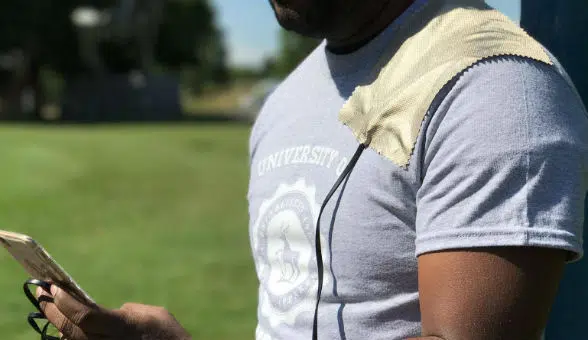
Consumers could soon be able to act as their own mobile phone power supply, researchers at the University of Surrey have announced, by simply wearing smart clothing that uses Triboelectric Nanogenerators (Tengs) to harvest and store the static charge generated by their movements.
“When someone wears a Teng while walking or running, it harvests the mechanical energy from the movement and converts it into electricity. This can then be stored in batteries or supercapacitors and used to charge mobile phones or power medical devices such as Fitbits.”
The researchers have introduced a new version of the original Teng concept, which was invented by Professor Zhong Lin Wang at Georgia Tech. The researchers’ new model has “improved sensors and energy generating devices which can be made into wearable applications such as sewn into a T-shirt like a patch, or inside a pair of shoes.”
“Tengs could also be useful in developing countries, especially in remote locations where the main grid cannot reach to power equipment such as radios, wireless communication devices and medical equipment. Subsequently, Tengs could also provide the household power requirements using large scale Teng networks.
“Tengs could also be used in a sensor pad on a pavement that would light streetlamps by the energy created when stepped on by pedestrians, or placed inside a car tyre which would connect to the vehicle’s battery to create electricity.”
“Tengs should be available in shops within the next few years — in the near future, they should be able to be used to harness wind and wave energy to help provide power to the nation’s main grid for industrial and household use,” the researchers add.
“Wearable Tengs can be made from natural fabrics such as cotton or wool so the idea is carbon-friendly and a renewable technology and could be used for years,” says principal project supervisor Professor Ravi Silva. “We’re looking forward to creating systems to generate power that have the advantages of being portable, autonomous and self-powered.”
Next: Visit the NFCW Expo to find new suppliers and solutions